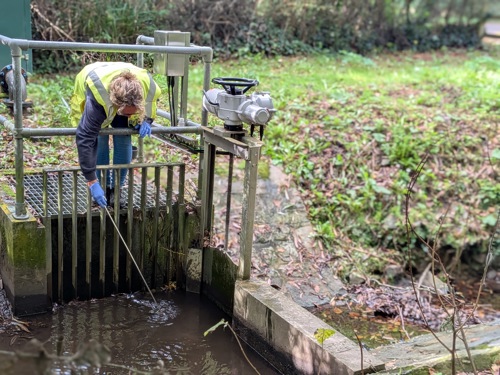PFAS is the term used to cover a family of synthetic substances collectively known as per- and poly-fluoroalkyl substances, often described to as forever chemicals.
PFAS
Water companies across the globe are planning to invest in new treatment systems, with the specific aim of removing a group of chemicals known as PFAS . This will help ensure drinking water supplies remain wholesome and safe to drink, and provide greater resilience to droughts, which are expected to become more frequent and more severe due to changing weather patterns.
A significant source of PFAS contamination in Guernsey’s environment is from firefighting foam used between the 1970s and early 2000, but PFAS exposure can come from many sources, including:
-
Contaminated food
-
Non-stick pans
-
Cooking utensils
-
Skin creams
-
Rinse aids
As scientific evidence grows, studies have linked certain types of PFAS to immune disruption, higher cholesterol levels and an increased risk for certain cancers.
There is still so much to learn about exposure, doses and types of PFAS, and as more studies are carried out and new evidence identified we will continue to hear more about its health and environmental impacts across the globe.
A brief history of PFAS and water resources on island.
In 2009 the States of Guernsey began planning and investing in the treatment of PFOS and PFOA, two specific types of PFAS that used to be found in fire-fighting foam, at Guernsey Airport. This included the removal and storage of contaminated soil from within the airfield itself, and from a historic plane crash site in the Petit Bot catchment.
The treatment element came in the form of a specially designed plant installed at Guernsey Airport. This removes PFAS from water collected from the airfield, allowing the water to then flow towards St Saviours reservoir where it can be stored ahead of treatment and distribution into the island’s drinking water network.
In addition, stream divert structures were built and installed and the Petit Bot pumping station refurbished, allowing contaminated water to bypass the reservoir as required. Properties with affected private supplies (i.e. boreholes) were connected to the public water supply and a rigorous testing schedule introduced.

Guernsey Water’s PFAS testing, carried out monthly, indicates consistently elevated levels of PFAS are present in some of the island’s raw water catchments. The water from these catchments is not collected for use in the island’s drinking water resources, which reduces the island’s resilience to drought.
Current Drinking Water Inspectorate (DWI) guidelines state the total concentration of PFAS chemicals in drinking water should be no greater than 0.1 micrograms per litre, the equivalent of one grain of salt in 1000 litres of water. Guernsey Water’s treated water test results are typically around half this level. However, the DWI have indicated that they expect their guideline level to reduce in the future. Guernsey Water is now planning for this.
As droughts are predicted to become more frequent and more severe, Guernsey Water needs to ensure it can collect as much water as possible. The map below shows in red those areas that currently are unable to be collected due to PFAS concentrations in raw water. This equates to around 15% of the island’s total catchment area. This is why we propose investing in new equipment that will remove PFAS during the treatment process, which will enable these sources to be captured in future.

Despite the above map indicating the inclusion of St Saviour’s reservoir within the shading, the water within it remains within guideline limits. This is thanks to reservoir bypass pipelines that were installed in 2012. These allow contaminated water to be diverted away from the reservoir, ensuring levels in drinking water remain well within guidelines.
Yes, our monitoring programme of treated water shows PFAS levels in Guernsey’s treated water are around 50% lower than the current guideline value determined by the DWI.
Our water quality team carry out monthly testing across the island’s streams and raw water reservoirs, this testing measures the concentration of 48 PFAS variants.
The results provide guidance to Guernsey Water on which sources of water are safe to collect for water treatment - if levels are too high, the water is not collected. This ensures PFAS levels in drinking water are kept well below permitted levels.

What is Guernsey Water doing about it?
Over the next 12 years, Guernsey Water plans to invest significantly in the treatment of PFAS. Work has already begun, with the development of a scope of work to determine the best treatment option. Early estimates suggest that this could cost around £20 million, this figure has been budgeted within Guernsey Water’s Strategic Investment Plan, but this estimate will become clearer once a treatment solution is chosen.
Given the cost and importance of the investment Guernsey Water must ensure that the treatment solution provides long-term value for the island and is appropriate for our size and needs. Investigations to determine this are underway and we are planning to test some of the options available to us in the next two to three years.
What about private water supplies?
If you have a private water supply, The Office of Environmental Health and Pollution Regulation offer free annual testing for any private supply used for drinking water or the irrigation of crops for food. The test covers PFAS amongst other chemical and microbiological contaminants.
To arrange a test or learn more, please call 221161, or email envhealth@gov.gg

